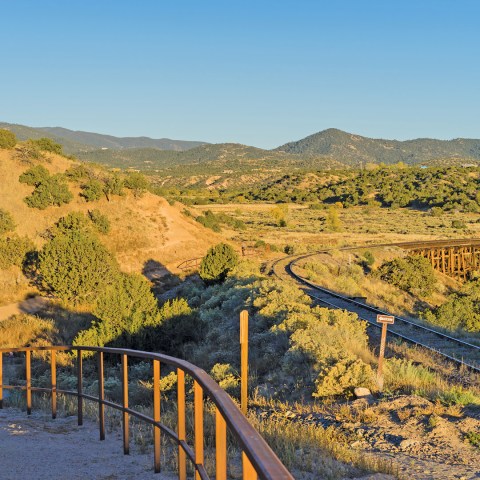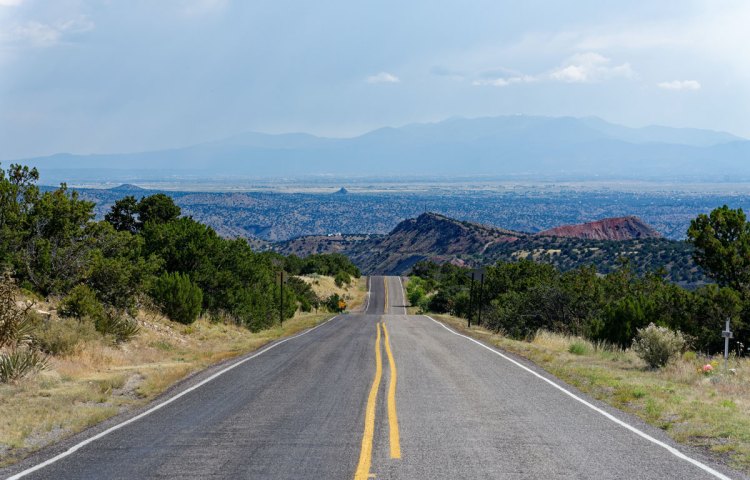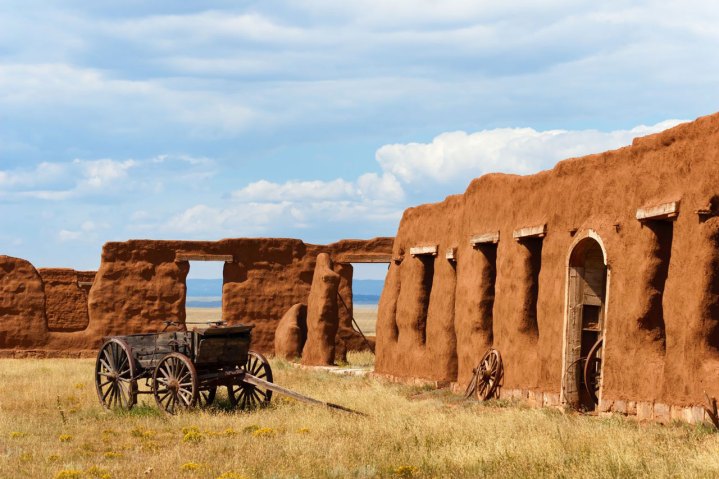Spas and Hot Springs in New Mexico
New Mexico is home to some of the finest hot springs you can find; some have remained glorious spots of relaxation away from it all at the end of a long, rewarding hike, while others have grown into full-service luxury spas. Whatever your preference, here are the best spas and hot springs New Mexico from Santa Fe, Taos, and the Pueblo of Jemez.
Santa Fe Spas
Ten Thousand Waves (3451 Hyde Park Rd., 505/982-9304, 9am-10:30pm Wed.-Mon., noon-10:30pm Tues. July-Oct.) is such a Santa Fe institution that it could just as well be listed under the city’s major attractions. This traditional Japanese-style bathhouse just outside of town has two big communal pools and seven smaller private ones tucked among the trees so as to optimize the views of the mountains all around; many have adjoining cold plunges and saunas. The place also offers full day-spa services, with intense massages and luxe facials and body scrubs. Prices are relatively reasonable, starting at $24 for unlimited time in the public baths and $112 for one-hour massages. In the winter (Nov.-June), the baths open at 10:30am (at 2pm Tues.) and close earlier on weeknights.
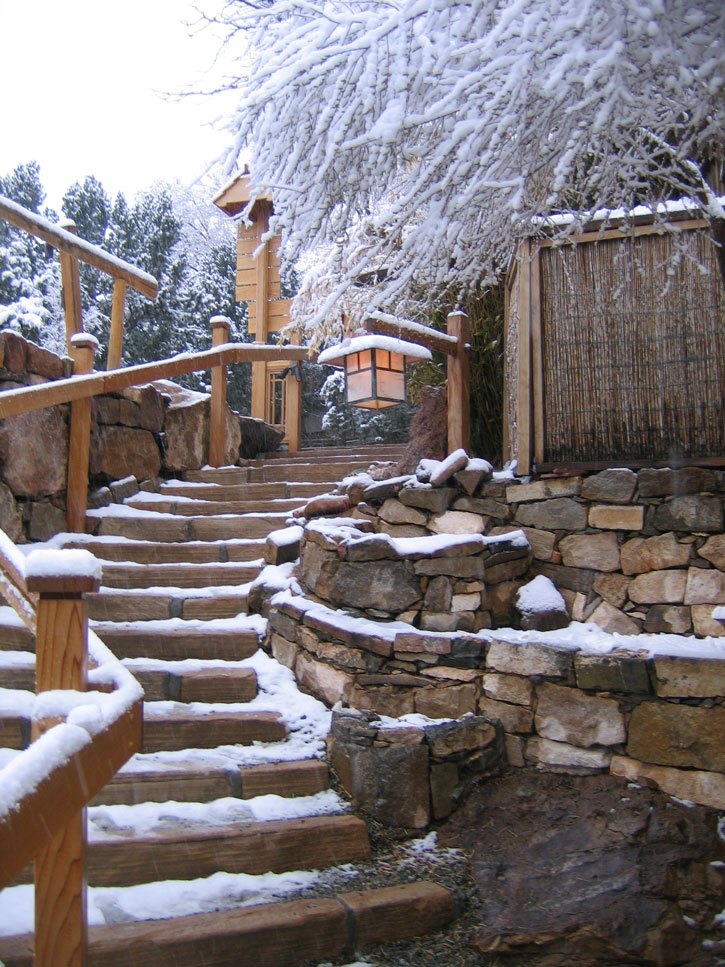
In town, Absolute Nirvana Spa (106 Faithway St., 505/983-7942, 10am-6pm Sun.-Thurs., 10am-8pm Fri.-Sat.) offers Balinese treatments and massages. Afterward, you can relax in the gardens with a cup of tea and some organic sweets from the adjacent tearoom.
Very highly rated by locals, Body of Santa Fe (333 W. Cordova Rd., 505/986-0362, 9am-9pm daily) is praised for its affordable treatments (massages from $80/hour) and relaxed atmosphere. There’s a nice café on-site too.
Taos Hot Springs
Two spots along the Rio Grande have natural pools of warm water, by-products of the seismic upsets that formed the gorge. They’re popular with locals, and clothing is optional. Don’t crowd in if several people are already in the spring, and never leave trash behind.
The easier spot to reach is Blackrock Springs, accessible by a 0.25-mile hike. From the intersection with U.S. 64, head north on Highway 522 about six miles to where the road dips; immediately after the bridge, turn left on County Road B-005, which runs along the north side of the small Rio Hondo and past the New Buffalo commune. The road crosses the water, then climbs a hill and descends again, toward the Rio Grande. Cross the old John Dunn Bridge to reach the west side, then turn left and park at the first switchback. Hike down the rocks and downstream to the springs.
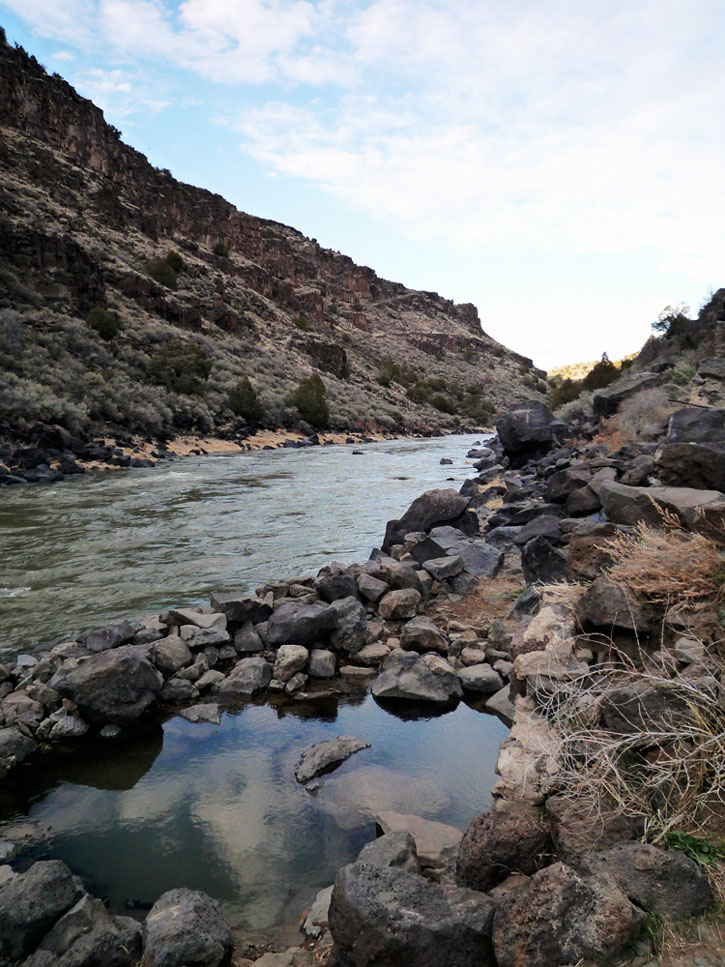
Also called Stagecoach Springs, Manby Springs are at the edge of the river where the stage road used to meet a bridge and cross to the west side of the gorge. The hike down is on the old road, now quite rocky, and takes about 20 minutes. (In the late afternoon, keep an eye out for bighorn sheep near the trail.) To find the parking area, take U.S. 64 four miles west, just past the airport, and turn right on Tune Drive; follow this to the end, approximately another four miles. The old road is off the southwest side of the parking area.
Jemez Springs
A funky old resort town and an old-school blend of hippie-Hispano-Pueblo New Mexico, Jemez Springs is a handful of little clapboard buildings tucked in the narrow valley along the road. As the most convenient place to indulge in the area’s springs, which have inspired tales of miraculous healing since the 1870s, the town makes for a nice afternoon pause or an overnight getaway. Giggling Springs (Hwy. 4, 575/829-9175, 11am-sunset Wed.-Sun., $18/one hour, 30/two hours, $60/day) has a spring-fed pool enclosed in an attractively landscaped flagstone area right near the Jemez River; reserve ahead, as occupancy is capped at 10.
The Jemez Springs Bath House (Hwy. 4, 575/829-3303, 10am-7pm daily, $18/hour), in one of the original historic buildings, is operated by the village. (The source is in a gazebo next door—check out the mineral buildup!) Here, the springs have been diverted into eight concrete soaking tubs—a bit austere, but with a cool historic vibe. Reserve ahead here too; massages and other spa treatments are available. The most natural springs (expect some algae) are on the riverside at the Bodhi Manda Zen Center (Hwy. 4, 575/829-3854, $10 donation); payment is cash only, on the honor system.
If you’re planning to explore the wilderness and missed the Walatowa Visitor Center at Jemez Pueblo, you can stop at the Jemez Ranger District office (Hwy. 4, 575/829-3535, 8am-4:30pm Mon.-Fri.) for info; it’s on the north edge of town.
Outside Jemez Springs, you pass two other opportunities to take a hot bath. Five miles north, where the red rocks of the canyon have given way to steely-gray stone and Battleship Rock looms above the road, is the start of the East Fork Trail (no. 137)—there’s a dedicated parking lot just north of the picnic area. From here, the hike up the trail to McCauley Warm Springs is a bit more than two miles, mostly uphill; follow the trail until it meets a small stream flowing down from your left (north), then walk up the creek about a quarter mile to the spring, which has been diverted so it flows into a series of pools, only 85°F at most points. (You can also reach the springs from the other direction along East Fork Trail, parking at Jemez Falls, farther north on Highway 4; from here, the hike is downhill—but of course a slog back up.)
More accessible are Spence Hot Springs, about two miles north of Battleship Rock, between mile markers 24 and 25. Look for a loop parking area on the east side of the road (if it’s full, there is another lot a short way north along the highway). The half-mile trail down to the river is wide and well tended, but then it’s a bit more strenuous heading up the steep hillside to two sets of 100°F pools with milky-blue mineral water.
